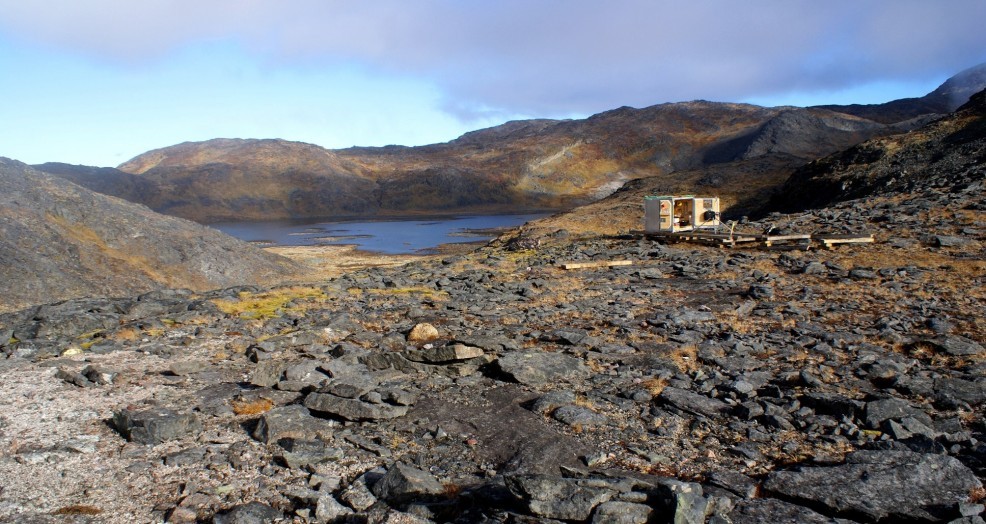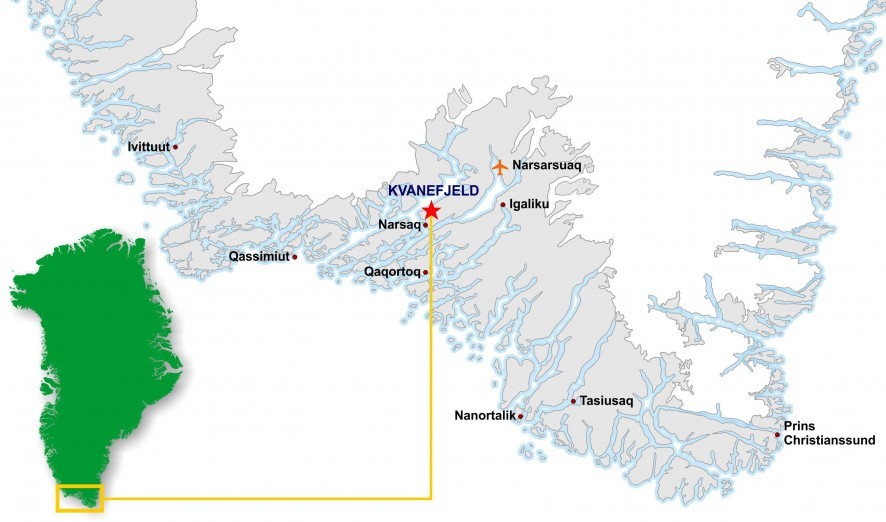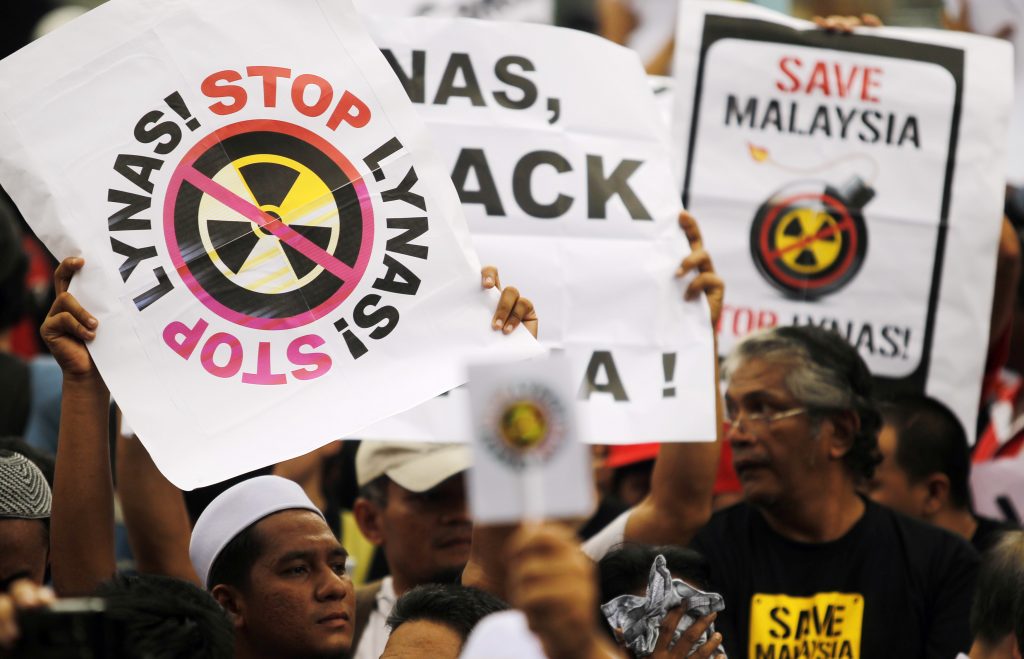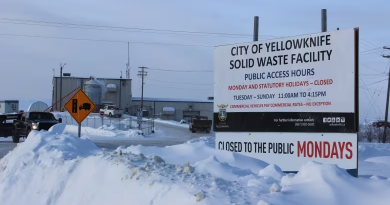Canadian geologist raises questions about controversial Greenland mining project

(Greenland Minerals)
As residents of five communities in southern Greenland gear up for public hearings about a proposed rare earths mining project later this month, a Canadian geologist says he has several questions about the project’s commercial viability and its potential environmental impact.
The Kvanefjeld Rare Earth Project, also known under its Greenlandic name Kuannersuit, is billed as being “ideally placed to meet growing rare-earth demand and has the potential to become Greenland’s first world-class mining operation.”
Proponents of the project say it will create hundreds of badly needed jobs in an economically depressed part of Greenland while helping break China’s stranglehold on the strategic minerals.
Experts estimate that China controls more than 80 per cent of the global supply chain of rare earth elements, a group of 17 metals that are critical for the development of new clean energy technologies, as well cutting edge space and defence materials.
Australian mining company Greenland Minerals A/S, which has been working for several years to develop the project, is in the process of obtaining all the necessary permits.
In December, the government of Greenland, Naalakkersuisut, gave the green light to start the public consultation of the Environmental Impact Assessment (EIA) and Social Impact Assessment (SIA) for Greenland Minerals A/S’ rare earths project at Kuannersuit.

A series of five public consultations are set for Jan. 22-26 in five communities surrounding the proposed project: Igaliku, Narsaq, Narsarsuaq, Qaqortoq and Qassiarsuk. The consultations will be attended by the Chairman of Naalakkersuisut Kim Kielsen, Minister for Business and Mineral Raw Materials Jens-Frederik Nielsen and Minister for Labor Market, Research and Environment Jess Svane.
‘I feel very, very, very sceptical’
But Anton Chakhmouradian, a professor of geology at the University of Manitoba and an expert on rare earth elements, said Greenlanders should take the company’s claims about the abundance of the strategic rare earth minerals in Kuannersuit and their ability to extract them with a grain of salt.
Chakhmouradian said Greenlanders should also start asking tough questions about a radioactive byproduct of the mining operation that has the potential to cause serious environmental damage for millenia.
The principal ore mineral at Kvanefjeld is called steenstrupine.
“Not only it is a structurally complex mix of 11 different elements – even if we exclude ‘minor’ elements, like calcium, aluminium and niobium, which are also present, but at lower levels – it is also extremely variable chemically on a microscale,” Chakhmouradian said.
This complex metallurgy makes it extremely difficult to extract the rare earth elements present in the ore at an industrial scale, he said.
Greenland Minerals claims that its rare earth recovery technology has been tested at the BTMR laboratories in China in 2020, overseen by rare earth specialists Shenghe Resources Holding Co Ltd., one of the leading rare earth producers in China.
But Chakhmouradian said it’s one thing to be able to extract minerals in a laboratory setting and a completely different thing to upscale this process on an industrial and a commercially viable scale.
There is also the fact that mining and processing such a complex ore would require tremendous resources and infrastructure that would be extremely expensive given how remote the mine is, Chakhmouradian said.
“I feel very, very, very sceptical,” Chakhmouradian said. “If you add all those things together: the absence of a well-demonstrated technology that would work on a major industrial scale, low grades, very difficult mineralogy, remoteness and the fifth problem is radioactivity.”
Silence about radioactive waste byproduct
Chakhmouradian says what makes him even more sceptical about the proposed project is the lack of any discussion about a little-known radioactive material contained in these ores.
“Steenstrupine has something like two per cent of thorium,” he said, “and thorium is very radioactive.”
There is nothing in the company’s spreadsheets and data sheets about thorium, Chakhmouradian said.
“Yes, uranium is their asset, they’re planning to extract uranium alongside rare earths but there is nothing on thorium and that makes me very-very suspicious,” Chakhmouradian said.
Basic calculations show that for each 25,000 tons of rare earth elements produced annually, the mining company will need to dispose of 3,000 tons of highly radioactive thorium, Chakhmouradian said.
“What are they going to do with this thorium? Where are they going to dump it?” Chakhmouradian said. “They make no clear comments or statements as to what is going to happen to all this radioactive waste.”

It’s important for Greenland to consider the experience of Malaysia and a rare earth processing plant operated there by another Australian company Lynas Corp Ltd, Chakhmouradian said.
Faced with domestic pressure over environmental concerns related to the radioactive pollution caused by rare earth processing, Malaysia demanded last year that Lynas find another location for processing ores containing radioactive materials such as thorium.
As part of the license, Lynas will have to build a cracking and leaching facility outside Malaysia before July 2023, after which the company will not be allowed to import raw materials containing naturally occurring radioactive material.
Related stories from around the North:
Canada: Canada outlines which Indigenous businesses benefit from $5M funding in the North, CBC News
Finland: Miners hunting for metals to battery cars threaten Finland’s Sámi reindeer herders’ homeland, The Independent Barents Observer
Norway: The Arctic railway – Building a future or destroying a culture?, Eye on the Arctic
Russia: Russian Indigenous groups call on Elon Musk to boycott company behind Arctic environmental disasters, The Independent Barents Observer
Sweden: Sami in Sweden start work on structure of Truth and Reconciliation Commission, Eye on the Arctic




I have never read so much mis information and rubbish in a so called article in a long while! Reads more like a paid opinion…Agenda!
Low level journalism at its best!
Well done!
Care to expand on your claims of misinformation?
Your comment, Sir, is unsupported by anything but ill-guided emotions. If you have something solid to counter the concerns raised in this interview, have the dignity to confront the people you insult in your ignorant rhetoric.
All these negative comments above about a factual news article are by penny stock investors holding shares in GGG (Greenland Minerals), an “Australian company” which they admit is owned by the Chinese to secure their monopoly on the world’s rare earth minerals.
Science / Scientists > Penny Stock Investors
—
Alle disse negative kommentarer ovenfor om en faktuel nyhedsartikel er af øre-aktieinvestorer, der ejer aktier i GGG (Greenland Minerals), et “australsk selskab”, som de indrømmer, ejes af kineserne for at sikre deres monopol på verdens sjældne jordarter.
Videnskab / Videnskabsmænd> Penny Stock Investors
Excellent points raised. Where is the radioactivity impact assessment which should have been done in conjunction with the environmental impact assessment. Greenland is in over its head with no regulatory experience in this type of mining.
As for the projects viability, the feasibility study is using separated rare earth oxide prices to value a low grade mixed concentrate. Cerium is priced in as a “by-product” at circa $5/Kg and is used to offset the cost of production. An ingenious way to make the projects cost of production look so low. I doubt this project will ever make it into projection.
It will be interesting to see what objections are raised during the public briefing stage. No doubt it won’t just be residents that objecting here but experts engaged by the residents to make the case for them. Could get very messy.
Chris, the benchmark for commercial viability here has to be Mt Pass, also operated by Shenghe.
Currently supplying Chinese separation facilities 50ktpa of concentrate, +60% TREO, 16% NdPr at a reported price ~$2kg. Way below $4kg cost value nominated by GGG so have to wonder just how serious Shenghe would be with Greenland at this point.
Incidentally the cheap MtP con triggered a bit of a price war with CNRE who early last year negotiated the price of their con from Baosteel down from the original $2.40kg to $1.78kg,
Doubt Shenghe will be doing GGG SH’s any favours anytime soon.
This is a project that has gained attractiveness because of the so called “Green Energy” agenda. “Green Energy” originated with the Climate Change enlightenment. At the beginning ,a young Swedish girl by the name of Greta Thunberg, was the poster child of that movement. Environmental impact was the theme. Why is she not mentioned in the opposition to this project. Could it have something to do with the abscence of carbon tax? or the redistribution of wealth? The push for the electric vehicle to replace the internal combustion engine vehicle is at the crux of this mining project pursuit. I think we must all turn the clock back and revisit the cost/ benefit relationship of the “Green Energy” push. In my view, the solutions are showing to be far more costly than the the benefits received. Wake up before it’s too late!
There is nothing wrong with Thorium per se It was one of the first New Age metals to be commercially exploited (Mantels in Gas Lanterns) and may in future replace the far more toxic Uranium if they ever manage to commercialize MSR Reactors. However it does need to be accounted for and not just swept under the carpet. Unfortunately for GGG their mining process will concentrate it, and while there is no current demand for Thorium it will have to be stored or disseminated back into the waste from which it came. Note The Yanks just buried over 8,000 tons of pure Th several years back when they no longer wished to maintain their Strategic Stockpiles.
A paid opinion?.. agenda? “Simon” up there (the first person to comment) is the one who obviously has some agenda – I am guessing, he/she is a troll on someone’s payroll. I raised legitimate concerns about just some of the issues that are being swept under the rug. “Nothing wrong with thorium” because it was used in gas lanterns, huh? Well, that was BEFORE the discovery of radioactivity by Becquerel. Becquerel (dead at 55 from radiation poisoning) and Radium Girls in the 1920s also thought there was nothing wrong with radium. Yeah, sure – it is all okay, as long as that thorium collector is not upwind from your own backyard!.. Read up on the Lynas plant in Kuantan, Sillamae tailings in Estonia (20 million Euros in cleanup costs) and about Krasnoufimsk monazite storage facility in Russia (over $11 million in cleanup costs) before making ignorant comments!
Agree
For the sake of mankind, keep China out of the Arctic!